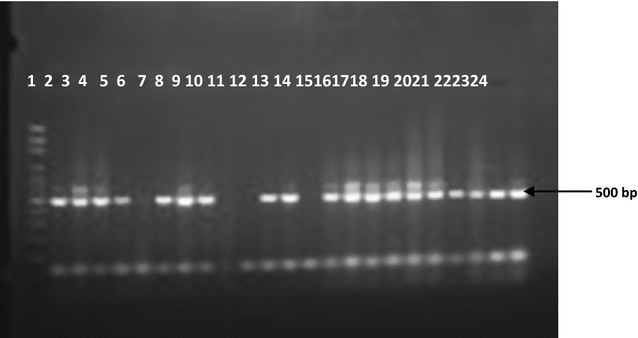Evaluation of the utility value of three diagnostic methods in the detection of malaria parasites in endemic area
- PMID: 28477621
- PMCID: PMC5420404
- DOI: 10.1186/s12936-017-1838-4
Evaluation of the utility value of three diagnostic methods in the detection of malaria parasites in endemic area
Abstract
Background: Malaria is a debilitating disease with high morbidity and mortality in Africa, commonly caused by different species of the genus Plasmodium in humans. Misdiagnosis is a major challenge in endemic areas because of other disease complications and technical expertise of the medical laboratory staff. Microscopic method using Giemsa-stained blood film has been the mainstay of diagnosis of malaria. However, since 1993 when rapid diagnostic test (RDT) kits were introduced, they have proved to be effective in the diagnosis of malaria. This study was aimed at comparing the accuracy of microscopy and RDTs in the diagnosis of malaria using nested PCR as the reference standard. Four hundred and twenty (420) venous blood specimens were collected from patients attending different General Hospitals in Ebonyi State with clinical symptoms of malaria. The samples were tested with Giemsa-stained microscopy and three RDTs. Fifty specimens were randomly selected for molecular analysis.
Results: Using different diagnostic methods, the prevalence of malaria among the subjects studied was 25.95% as detected by microscopy, prevalence found among the RDTs was 22.90, 15.20 and 54.80% for Carestart, SD Bioline PF and SD Bioline PF/PV, respectively. Molecular assay yielded a prevalence of 32%. The major specie identified was Plasmodium falciparum; there was co-infection of P. falciparum with Plasmodium malariae and Plasmodium ovale. The sensitivity and specificity of microscopy was 50.00 and 70.59% while that of the RDTs were (25.00 and 85.29%), (25.00 and 94.12%) and (68.75 and 52.94%) for Carestart, SD Bioline PF and SD Bioline PF/PV, respectively. Cohen's kappa coefficient was used to measure the level of agreement of the methods with nested PCR. Microscopy showed a moderate measure of agreement (k = 0.491), Carestart showed a good measure of agreement (k = 0.611), SD Bioline PF showed a fair measure of agreement (k = 0.226) while SD Bioline PF/PV showed a poor measure of agreement (k = 0.172).
Conclusions: This study recommends that the policy of malaria diagnosis be changed such that the routine diagnosis of malaria is done by a combination of both microscopy and a RDT kit of high sensitivity and specificity so as to complement the errors associated with either of the methods. The finding of P. ovale in the study area necessitates an expanded molecular epidemiology of malaria within the study area.
Keywords: Diagnosis; Malaria; Microscopy; PCR; RDT.
Figures


References
-
- Federal Ministry of Health . National malaria and vector control division. Nigeria: Abuja; 2005.
-
- WHO . Malaria factsheet. Geneva: World Health Organization; 2013.
-
- WHO . World malaria report 2012. Geneva: World Health Organization; 2012.
-
- Orogade A. Current issues in clinical and laboratory diagnosis of malaria. In: Okwa O, editor. Malaria parasites, vol 29. Rijeka: In Tech; 2012. pp. 161–172.
Publication types
MeSH terms
Substances
LinkOut - more resources
Full Text Sources
Other Literature Sources
Medical

